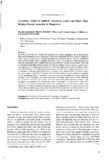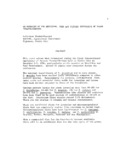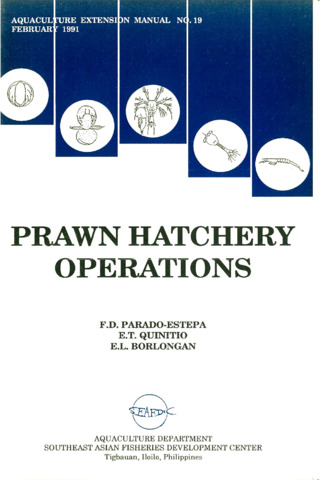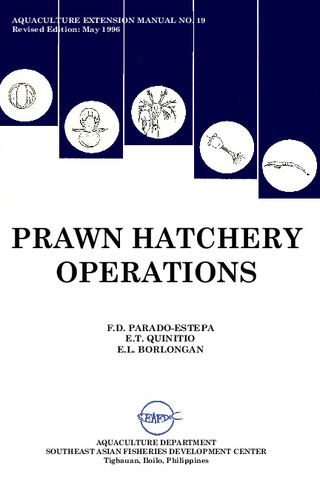Co-culture trials of sandfish Holothuria scabra and black tiger shrimp Penaeus monodon in mangroves
Share
Abstract
To address its mandate to develop environment-friendly culture techniques, the Southeast Asian Fisheries Development Center, Aquaculture Department (SEAFDEC/AQD) is trying to establish a culture system in mangroves for commercially important aquaculture species. Recently, SEAFDEC/AQD has successfully produced sandfish, Holothuria scabra, in the hatchery. Using hatchery-bred juveniles, monoculture and co-culture trials are being conducted in ponds, pens and cages. This study investigated the feasibility of the co-culture of black tiger shrimp, Penaeus monodon, and H. scabra in the mangroves by comparing growth and survival in monoculture and co-culture conditions. Water and sediment quality were compared between treatments. Results showed that growth and survival of P. monodon (P. monodon only = 48.8±4.9%; P. monodon + H. scabra = 46.1±7.4%) and H. scabra (H. scabra only = 13.1±6.1%; P. monodon + H. scabra = 12.3±6.2%) grown together or separately did not significantly differ. P. monodon survivial was positively correlated while growth negatiely correlated with temperature. Feed input significantly increased sulfide levels in both treatments (P. monodon; P. monodon + H. scabra) and sulfide significantly differed between treatments with the highest concentration in P. monodon only, then P. monodon + H. scabra and H. scabra only. Ammonia concentrations followed the same trend as sulfide but did not significantly differ among treatments. P. monodon cultured in mangroves were not affected by the white spot syndrome virus which affected neighboring culture ponds. Results of these initial trials may not be conclusive yet but show a promising culture system for P. monodon that may be integrated with the mangroves.
Suggested Citation
Lebata-Ramos, M. J. H., Solis, E. F. D., Sibonga, R. C., & Satoshi, W. (2012). Co-culture trials of sandfish Holothuria scabra and black tiger shrimp Penaeus monodon in mangroves. In K. Tanaka, S. Morioka, & S. Watanabe (Eds.), Sustainable stock management and development of aquaculture technology suitable for Southeast Asia (JIRCAS Working Report No. 75) (pp. 87-95). Tsukuba, Ibaraki, Japan: Japan International Research Center for Agricultural Sciences.
Taxonomic term
Collections
Related items
Showing items related by title, author, creator and subject.
-
An overview of the nutrition, feed and feeding techniques of prawn penaeid/shrimps
Piedad-Pascual, Felicitas (Philippine Council for Aquatic and Marine Research and Development, 1989)This paper echoes what transpired during the first International Conference of Penaeid Prawns/Shrimps held in Iloilo City in December 4-7, 1984, particularly on the Nutrition nd Feed Development. Around 25 papers were ... -
Prawn hatchery operations
Parado-Estepa, Fe D.; Quinitio, Emilia T.; Borlongan, Emeterio L. (Aquaculture Department, Southeast Asian Fisheries Development Center, 1991-02)The manual, an updated version of the 1984 SEAFDEC/AQD manual, presents the underlying principles and step-by-step instructions of prawn larval and post-larval rearing. The techniques described are not only applicable to ... -
Prawn hatchery operations
Parado-Estepa, Fe D.; Quinitio, Emilia T.; Borlongan, Emeterio L. (Aquaculture Department, Southeast Asian Fisheries Development Center, 1996-05)The manual, an updated version of the 1984 SEAFDEC/AQD manual, presents the underlying principles and step-by-step instructions of prawn larval and post-larval rearing. The techniques described are not only applicable to ...






